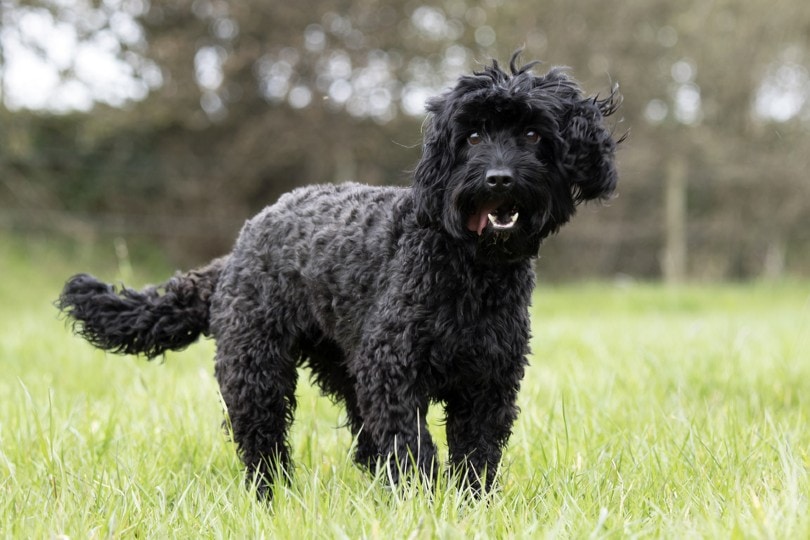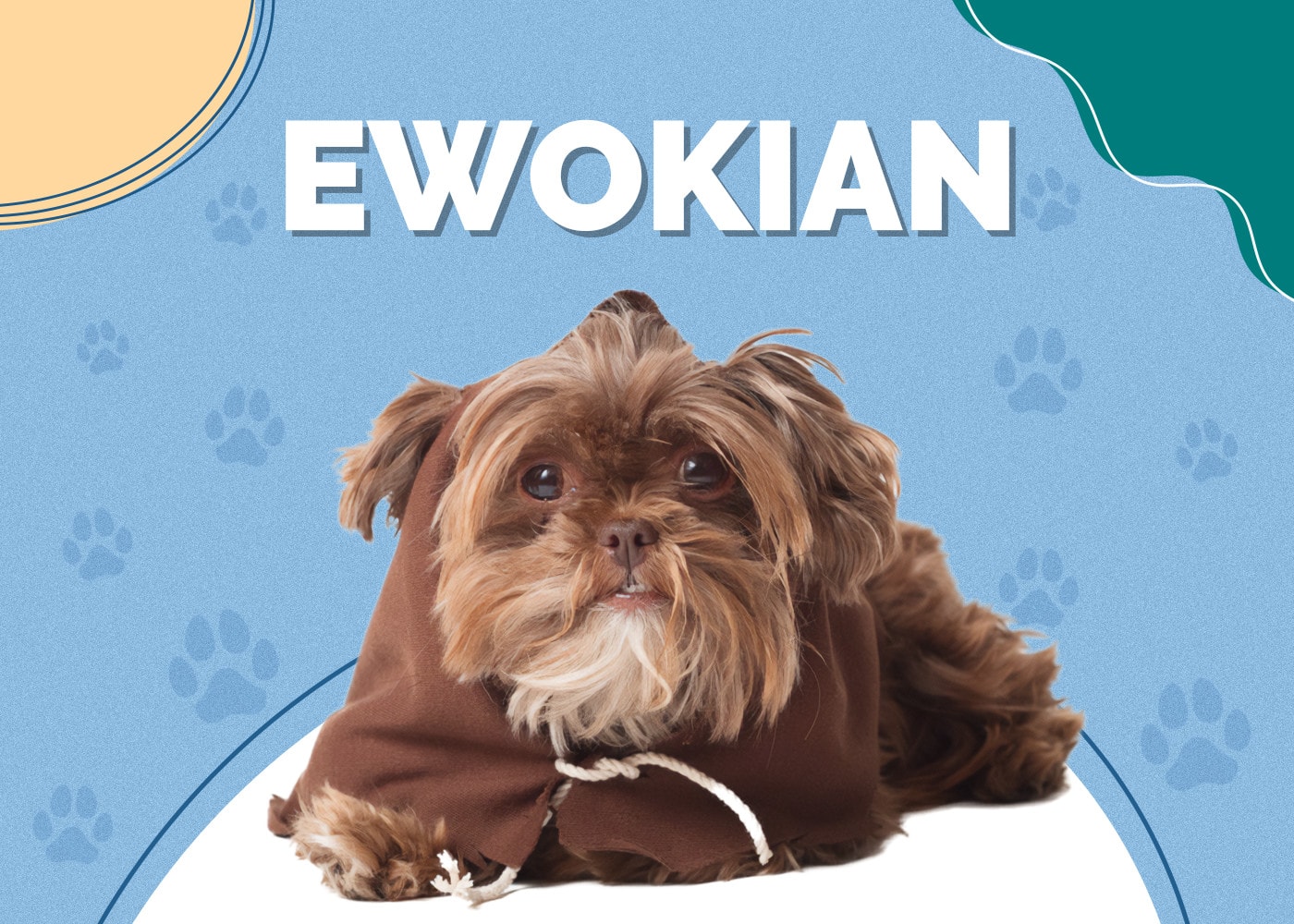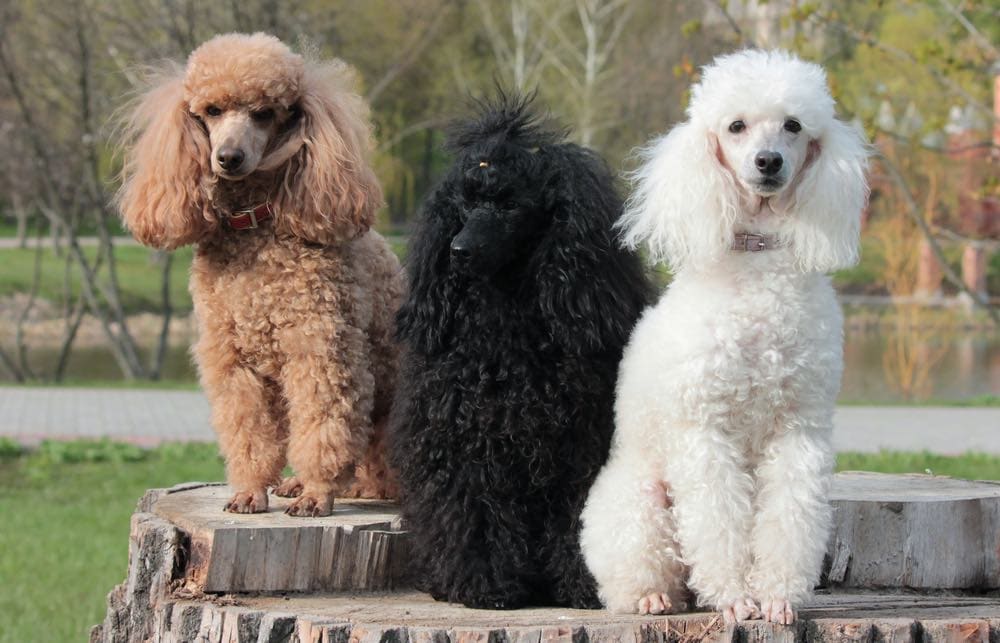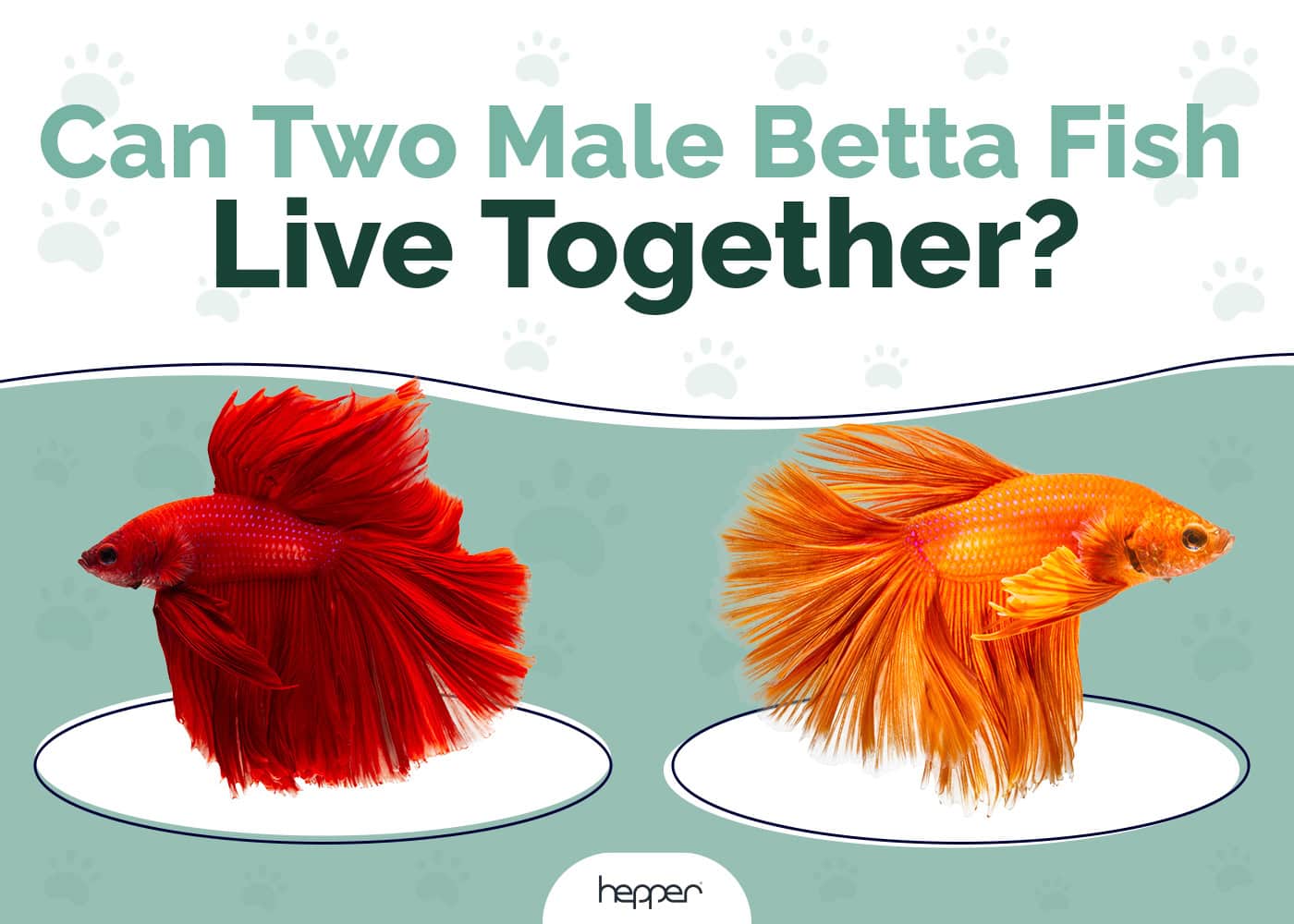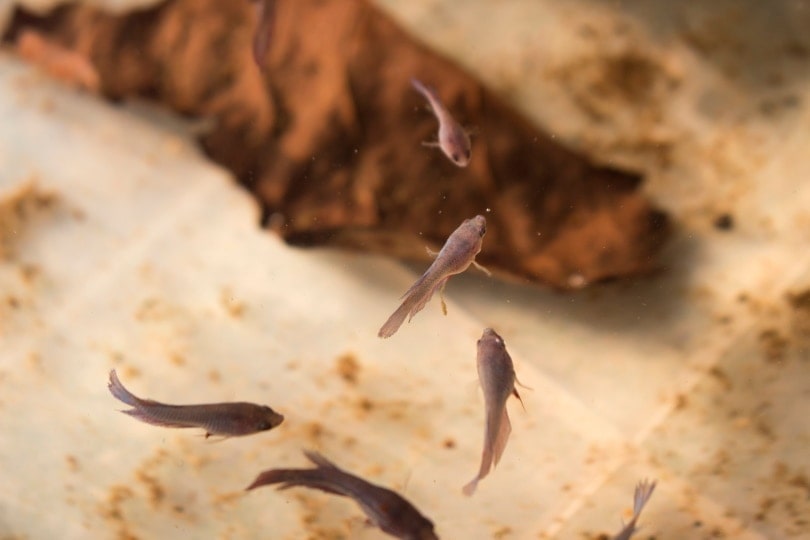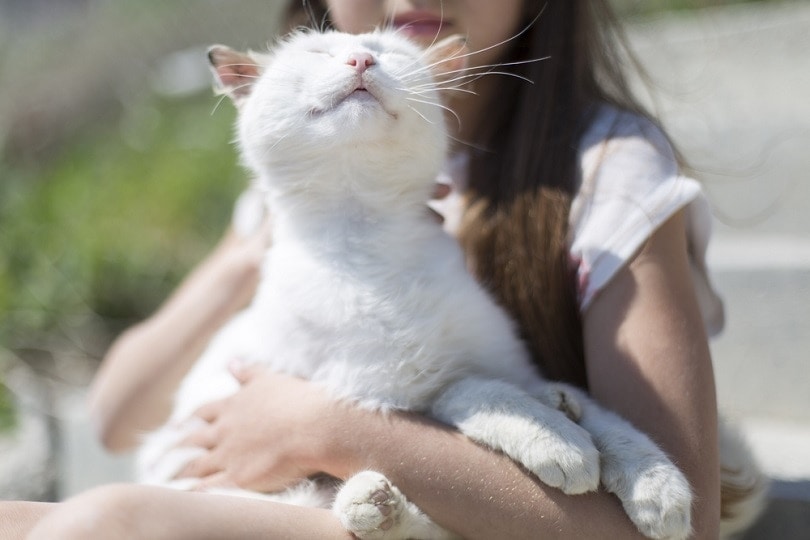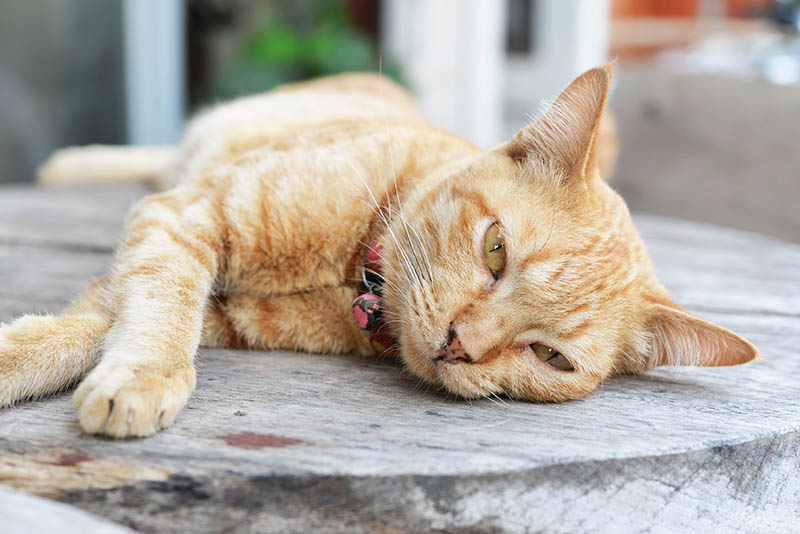Norwegian Elkhound Dog Breed Info: Pictures, Traits & Facts

Updated on
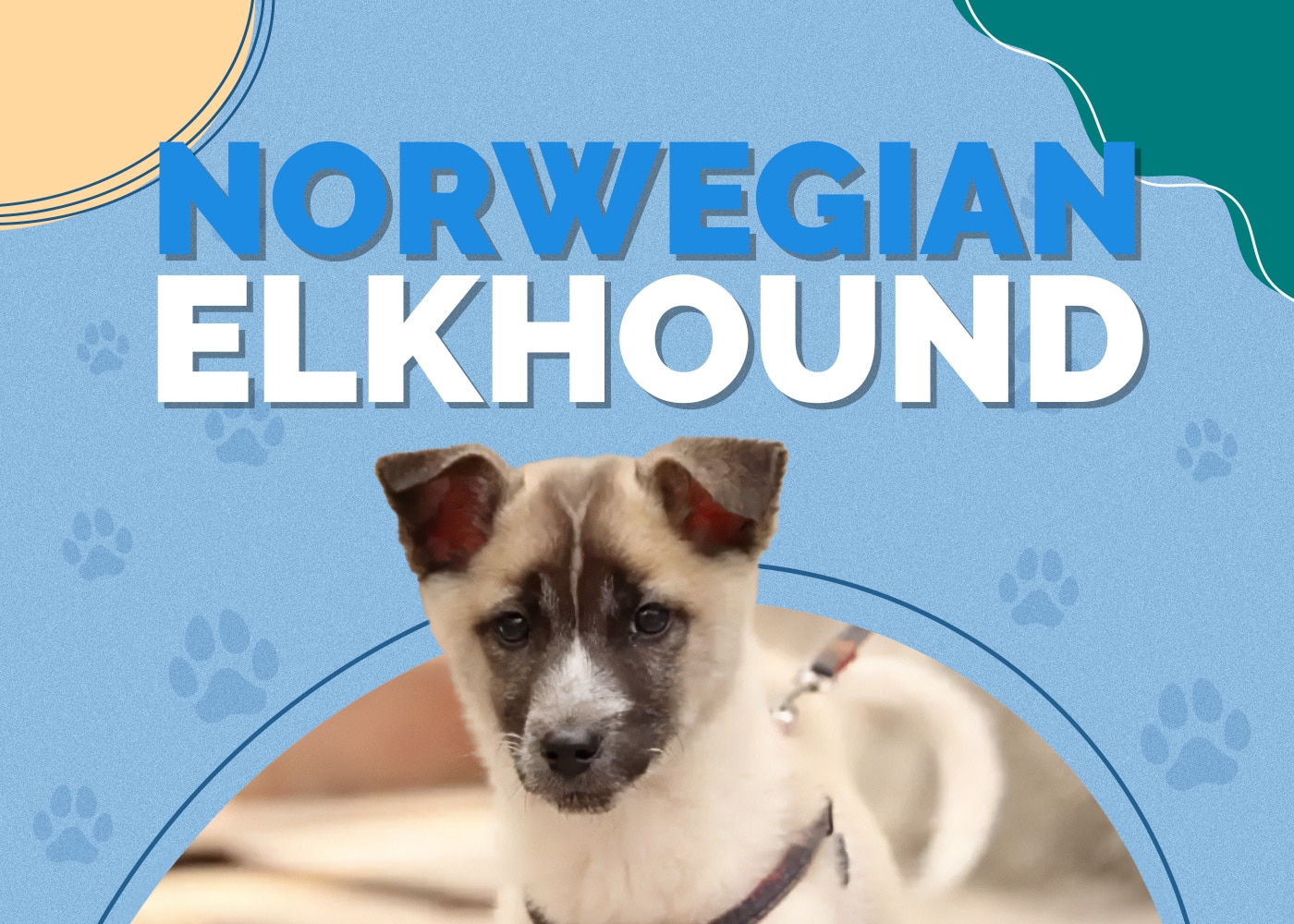
Height:
18-21 inches
Weight:
40-60 pounds
Lifespan:
10-15 years
Colors:
A mix of gray, silver, black, and white
Suitable for:
Active, outdoorsy families and individuals with time to provide physical and mental engagement, experienced dog owners
Temperament:
Dignified, Independent, Confident, Intelligent, Bold, Energetic, Athletic, Protective
Fearless and independent, the Norwegian Elkhound is an impressive dog. It’s a medium-sized breed, but they were bred and used for hunting the largest of game. They have the stamina and energy of a breed that’s meant to track all day, sometimes for several days in a row.
They’re not going to be the most obedient dog and they can be very difficult to train. They’re so independent and free-spirited that they may have no interest in work, which they see as boring and pointless.
Still, they can make excellent family dogs. You just have to realize that they view themselves as your partner, your equal. You can still get them to learn the house rules, but you’ll always need a firm hand.
If you want your Norwegian Elkhound to behave, you’ll also have to provide plenty of exercise. They were bred for multi-day hunts and they still have the energy needed to fuel such hard work. Providing yours with a job is a great way to keep them mentally stimulated and physically satisfied, which can help you prevent your dog from becoming bored and destructive.
Norwegian Elkhound Puppies
This breed has a pretty broad price range when being purchased from a breeder. You are either going to find one of these pups at a somewhat affordable rate or it is going to be quite a high price tag. If the price is too steep at either end, there’s another solution. Instead of purchasing your Norwegian Elkhound from a breeder, you could try finding one available for adoption.
If you decide to check out the adoption route, you can find sources devoted solely to the Norwegian Elkhound, such as the Norwegian Elkhound Rescue. At their site, you can find Norwegian Elkhounds available for adoption all across the United States.
3 Little-Known Facts About the Norwegian Elkhound
1. Norwegian Elkhounds Were Bred for Tracking Moose
Norwegian Elkhounds are only medium-sized dogs. But the game they were built to track and hunt is anything but. They were made to help take down the largest of game, including bears, moose, and elk.
The dog was expected to track and chase the animal until it could corner it or trap it. Then, the dog would block off the animal’s escape route and bark frantically; both to alert the hunter to their whereabouts and to scare the game into staying put.
2. They Make Great Sled Dogs
Though they were intended as big-game hunters, the Norwegian Elkhound’s particular skills have great use in other areas as well. Because their thick fur coats allow them to work long periods in the cold and snow without issue, they can even make great sled dogs.
3. They Can Be Drafted in Norway During Wartime
As you could probably guess from their name, Norwegian Elkhounds hail from Norway. In their home country, their incredible talents and work ethic are well-known. So much so that all Elkhounds can actually be drafted during wartime!
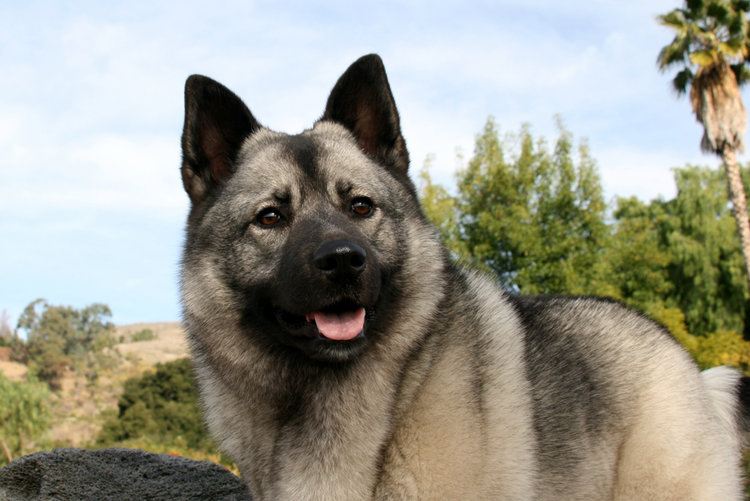
Temperament & Intelligence of the Norwegian Elkhound 🧠
Since they were bred for long, solitary hunts tracking large game, this breed became very independent. They also have tons of endurance, which helped them cover the dozens of miles necessary to track down big game.
As you can imagine of a canine that’s made to track down and trap game that’s several times its size, the Norwegian Elkhound is incredibly courageous. They know no fear and will not back down from strangers.
They’re also quite wary of strangers, making them excellent guard dogs. But despite this, they’re very loving and close to their family.
If you’re looking for a dog that will become completely obedient, it’s not the Norwegian Elkhound. They don’t take well to obedience training due to their independent nature. And while training, if you make the dog feel like it was unfairly punished, it’s likely to hold a grudge.
Though they’re not easily trained and won’t be the most obedient pets, Norwegian Elkhounds are still very intelligent. They understand the commands, but they like to do their own thing.
Are These Dogs Good for Families? 🏡
Despite their hunting background, this breed is known for being very gentle with children. They also bond well with multiple members of the family, though they feel that everyone is on equal footing and won’t take well to family members who think they’re dominant.
Overall, Norwegian Elkhounds are good family pets.
Does This Breed Get Along with Other Pets? 🐶 😽
Though the Norwegian Elkhound gets along well with multiple family members and even does well with children, they’re not the best with other pets. They can be aggressive with other large pets and may also give chase to smaller pets.
Keep in mind, this breed was made to hunt large game. They’ve got some dominant tendencies and enough prey drive to keep them on the hunt for days at a time.
Properly socializing your Norwegian Elkhound early and often can help to reduce their prey drive and make them more agreeable with other pets. Just keep in mind their background if you’re adding one to a family that already has other pets.
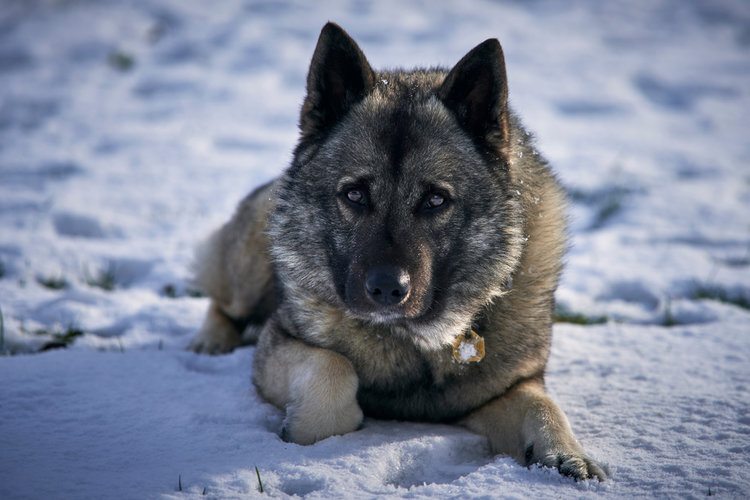
Things to Know When Owning a Norwegian Elkhound:
Food & Diet Requirements 🦴
Luckily, Norwegian Elkhounds aren’t the largest dogs, so they don’t require too much in the way of food. They also don’t have any special dietary requirements, so any high-quality dry dog food should suffice.
Depending on the size of your Norwegian Elkhound, it should eat between two and three cups of dog food each day. But be sure not to overfeed this breed. They tend to eat whatever is given. This can quickly lead to an overweight and unhealthy dog, and eventually, they can even become obese.
Exercise 🐕
For a dog that was bred to track and hunt large game all day for multiple days, the Norwegian Elkhound doesn’t need all that much exercise. About 30 to 45 minutes of physical activity each day will do. However, don’t skimp on this — they need to move their bodies each day to avoid becoming aggressive, dominant, or downright bored.
If you have a large yard for your dog to run around in, that’s even better, but it’s not necessary. With a few walks or some structured playtime each day, your Norwegian Elkhound should stay in great health.
Training 🦮
Though highly intelligent, this is one breed that isn’t very easy to train. They can definitely understand the commands and concepts, but obedience just isn’t something they’re into.
These are very independent dogs. They were bred to be. When hunting and tracking ahead of the hunter, these dogs needed to be able to make decisions for themselves, not wait for a hunter to provide each signal.
Today, that independence remains. Because of it, this breed can sometimes put its foot down when it comes to obedience training. They are also very headstrong and won’t do well with someone attempting to take dominance over them. They see themselves as your partner more than as your subordinate.
Still, you can get them to understand and perform the basic commands if you keep a firm hand and remain vigilant. You’ll want some experience with dog training before attempting to train one of these canines.
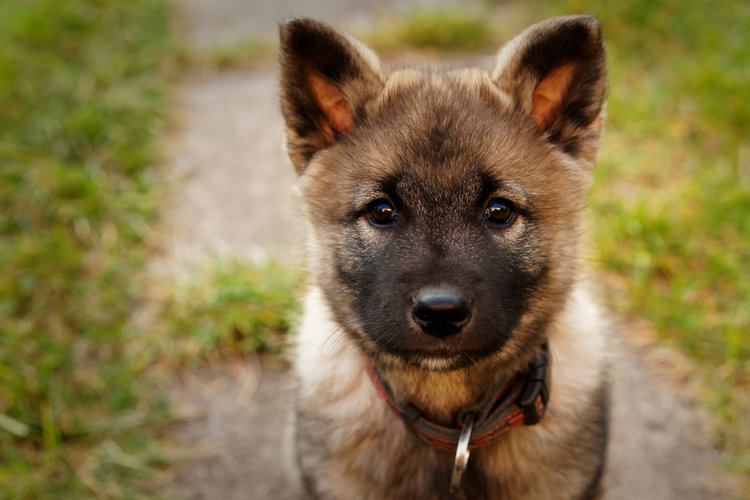
Grooming ✂️
Though they’re covered in long, puffy fur that keeps them warm in the coldest of climates, the Norwegian Elkhound doesn’t shed very much. However, a few times a year they’ll really drop a lot of hair and you’ll need to do frequent grooming sessions. The rest of the time though, a single brushing session each week ought to suffice.
This breed is rather clean when it comes to their coat. They don’t need bathing often. Thankfully, they don’t get very smelly either. You should only bathe yours whenever completely necessary.
Like other dogs, you’ll want to provide regular trimming of your Norwegian Elkhound’s nails. Likewise, you’ll need to check and clean their teeth regularly and their ears as well.
Health and Conditions ❤️
Overall, the Norwegian Elkhound is a rather healthy and hardy breed. They don’t have many known illnesses or health conditions that plague them. That said, there are a few things that you’ll want to watch out for if you’re adding one of these great dogs to your family.
Fanconi syndrome: When a dog has Fanconi syndrome, the tubules of their kidneys no longer function properly. They’re supposed to reabsorb electrolytes and other nutrients. Instead, with Fanconi syndrome, they’ll release the nutrients and electrolytes into the urine where they will be expelled in excess. In the end, this will result in kidney failure.
Hip dysplasia: This is a condition where the femur and hip form incorrectly so that the femur doesn’t sit properly in the hip socket. Instead of functioning as intended, the leg bone will rub on the hip causing pain and limiting motion. There’s no cure, but the pain can be treated and managed.
Progressive retinal atrophy: PRA for short, progressive retinal atrophy is a deterioration of the photoreceptor cells in the eyes that will eventually lead to blindness. Unfortunately, there is currently no treatment available.
Hypothyroidism: This condition is usually characterized by loss of hair, weight gain, a dull coat, reduced levels of activity, and a reduction in the ability to handle cold temperatures. Hypothyroidism can be treated by oral hormones that will need to be administered for the remainder of the dog’s life.
Sebaceous cysts: These cysts form around hair follicles. They fill with sebum and are liable to develop secondary bacterial infections.
- Hypothyroidism
- Sebaceous cysts
- Fanconi syndrome
- Hip dysplasia
- Progressive retinal atrophy
Male vs Female
Male and female Norwegian Elkhounds are pretty similar as far as temperament and attitude. But physically, the males tend to be the larger members of the breed.
Females tend to top out around 20 inches and 50 pounds. Males, on the other hand, can reach 60 pounds at 21 inches.
Final Thoughts
Intelligent, hard-working, and loyal but not overly affectionate, the Norwegian Elkhound can make a great hunter, companion, or family dog. They are very smart and can learn commands, but they will make it clear that they have no desire to do so.
They’re excellent with children, but since they were bred for the hunt, they aren’t as good with other pets. But they make excellent guard dogs thanks to their highly protective nature and courageous, fearless demeanor. They aren’t afraid of anything, and they’ll do whatever it takes to protect their family.
These aren’t the largest dogs, and they don’t need tons of space. A yard will be appreciated but it’s not necessary. Compared to some breeds, their exercise needs aren’t excessive. 30 to 45 minutes of physical activity each day should prevent this breed from becoming bored and destructive.
Featured Image: Pxhere




